Defenses for Fall 2018
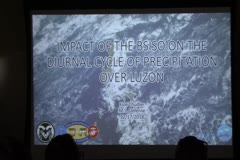
Impact of the Boreal Summer Intraseasonal Oscillation on the Diurnal Cycle of Precipitation in the Island of Luzon
December 17, 2018
Kyle Chudler
The Asian Summer Monsoon (ASM) is a major component of the global weather system with impacts across multiple scales. Driven by the thermal contrast between the Asian continent and the Indian and Pacific Oceans, the monsoon winds bring warm, moist air into the south Asian and maritime continents, along with copious amounts of rain. One striking feature in rainfall climatology of the ASM is the…
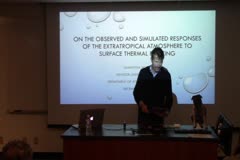
ON THE OBSERVED AND IDEALIZED ROLES OF THE EXTRATROPICAL OCEAN IN AIR-SEA INTERACTION AND CLIMATE VARIABILITY
December 06, 2018
Samantha Wills
The ocean is an integral part of the climate system, as it is capable of storing and releasing large quantities of heat across the air-sea interface, helping to regulate temperatures in the atmospheric boundary layer, and influencing atmospheric motions. Its closely-coupled interactions with the atmosphere system have wide-ranging impacts on the large-scale and local patterns of climate and…
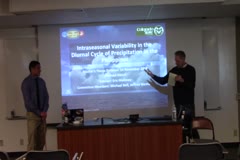
Intraseasonal Variability in the Diurnal Cycle of Precipitation in the Philippines
November 14, 2018
Michael Natoli
Precipitation in the region surrounding the South China Sea (SCS) over land and coastal waters exhibits a strong diurnal cycle associated with a land-sea temperature contrast that drives a sea-breeze circulation. The boreal summer intraseasonal oscillation (BSISO) is an important modulator of the daily mean precipitation rate and the amplitude of the diurnal cycle. Using 19 years of the CMORPH…
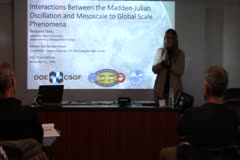
Interactions Between the Madden-Julian Oscillation and Mesoscale to Global Scale Phenomena
November 12, 2018
Ben Toms
The Madden-Julian Oscillation (MJO) influences and interacts with atmospheric phenomena across the globe, from the tropics to the poles. In this two-part study, the interactions of the MJO with other phenomena across a broad range of scales are considered, including mesoscale convective structures within the tropics and global teleconnection patterns. While the two studies are distinct in the…
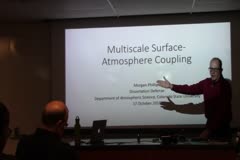
MULTIPLE SCALES OF SURFACE-ATMOSPHERE COUPLING IN AN EARTH SYSTEM MODEL
October 17, 2018
Morgan Phillips
An Earth System Model that had been modified to use three distinct scales of coupling between the surface and atmosphere was used to simulate conditions that would be present under past and future climate scenarios of fixed Sea Surface Temperature forcing. The first of these was the Community Atmosphere Model coupled to the Community Land Model at a relatively coarse resolution of 2.5 degrees…
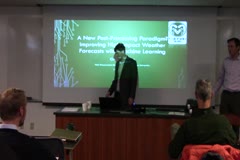
A New Post-Processing Paradigm? Improving High-Impact Weather Forecasts with Machine Learning
October 15, 2018
Gregory Herman
High-impact weather comes in many different shapes, sizes, environments, and storm types, but all pose threats to human life, property, and the economy. Because of the significant societal hazards inflicted by these events, having skillful forecasts of the risks with sufficient lead time to make appropriate precautions is critical. In order to occur, these extreme events require a special…
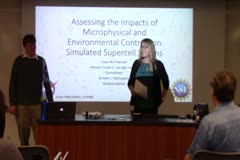
Assessing the Impacts of Microphysical and Environmental Controls on Simulated Supercell Storms
October 11, 2018
Sean Freeman
Supercell thunderstorms are some of the most dangerous single-cell storms on the planet. These storms produce many hazards to life and property, including tornadoes, floods, damaging straightline winds, strong updrafts and downdrafts, and lightning. Although these hazards are not unique to supercells, they are often at their strongest when supercell-produced. Because of the destructive power of…
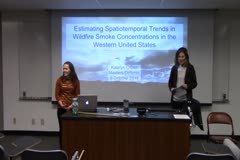
Estimating spatiotemporal trends in wildfire smoke concentrations in the western United States
October 09, 2018
Kate O'Dell
The United States (US) has seen significant improvements in seasonal air quality over the past several decades. However, particulate air quality in summer over the majority of the western US has seen little improvement in recent decades. Particulate matter with diameters < 2.5 microns (PM2.5) is a large component of ambient air quality that is associated with negative health effects and…
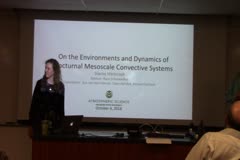
On the Environments and Dynamics of Nocturnal Mesoscale Convective Systems
October 04, 2018
Stacey Hitchcock
The 2015 Plains Elevated Convection at Night (PECAN) field campaign was motivated by unanswered questions about key processes in elevated mesoscale convective systems (MCSs) and the difficulty in accurately forecasting them. During the campaign, 15 MCS environments were sampled by an array of instruments including radiosondes launched by fixed and mobile sounding teams. Cluster analysis of…
